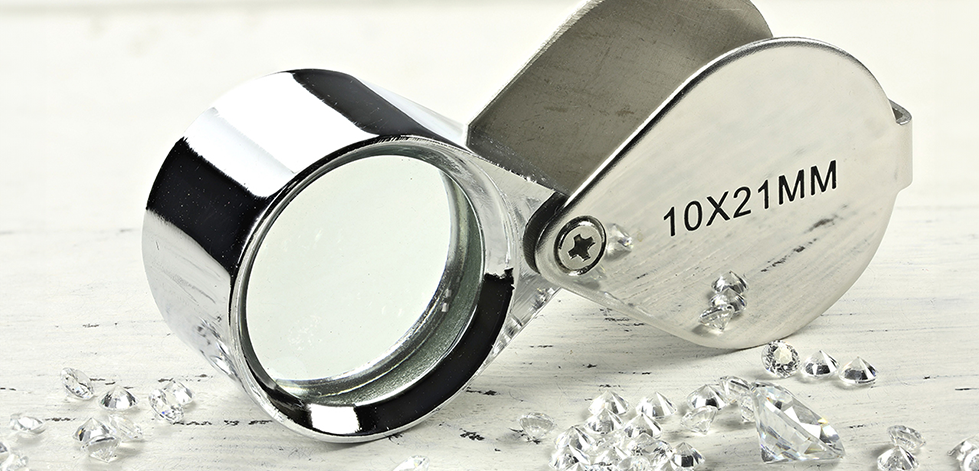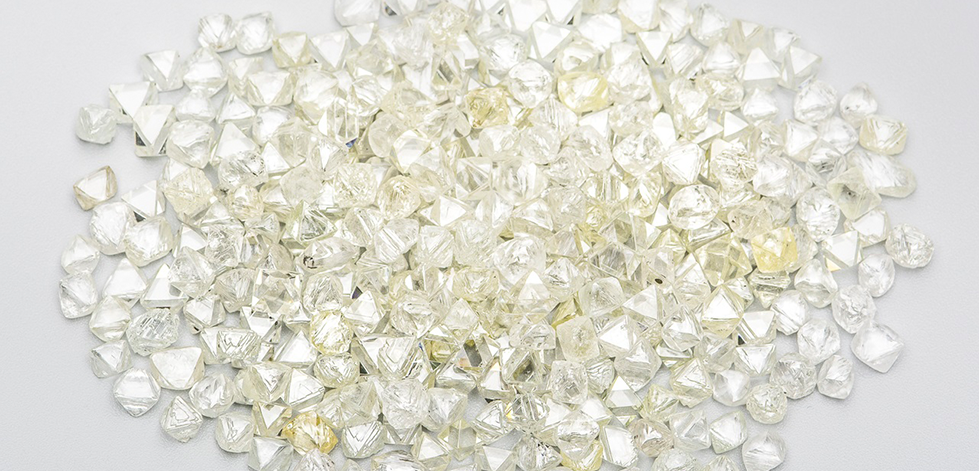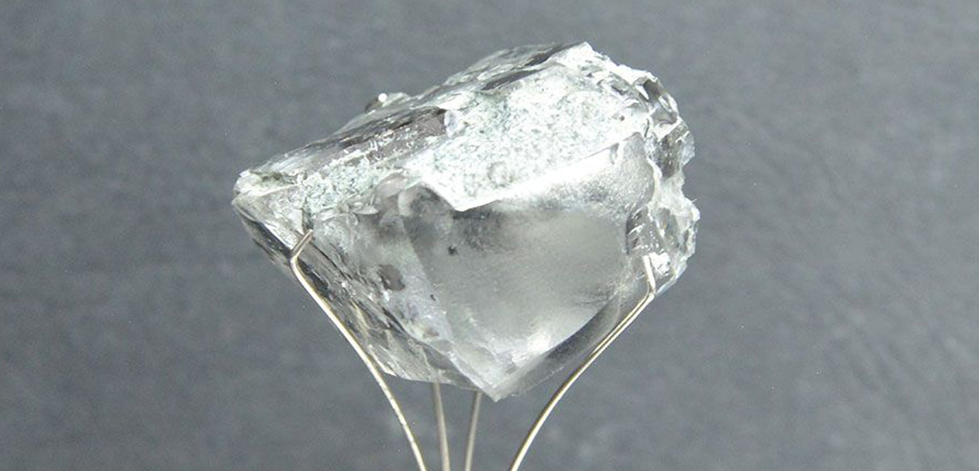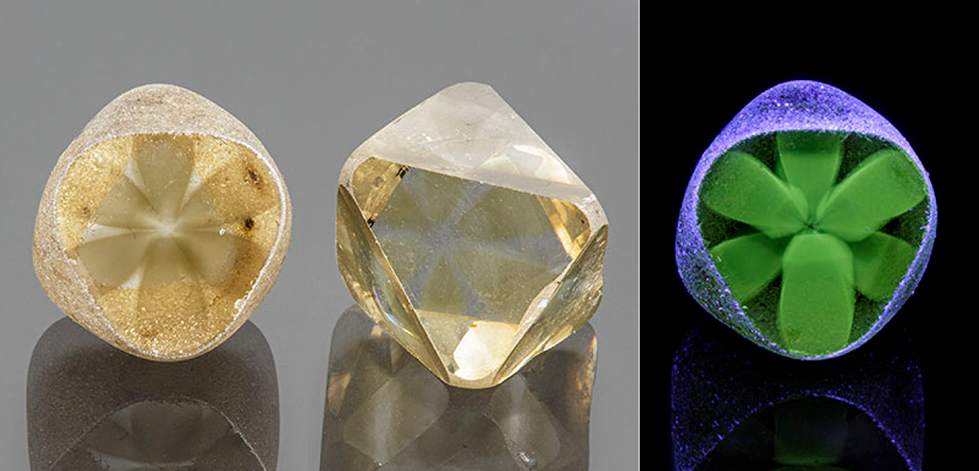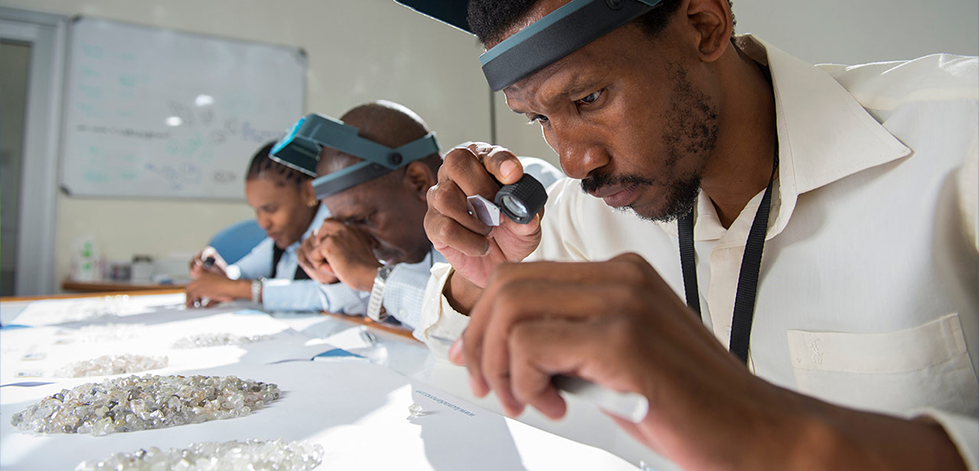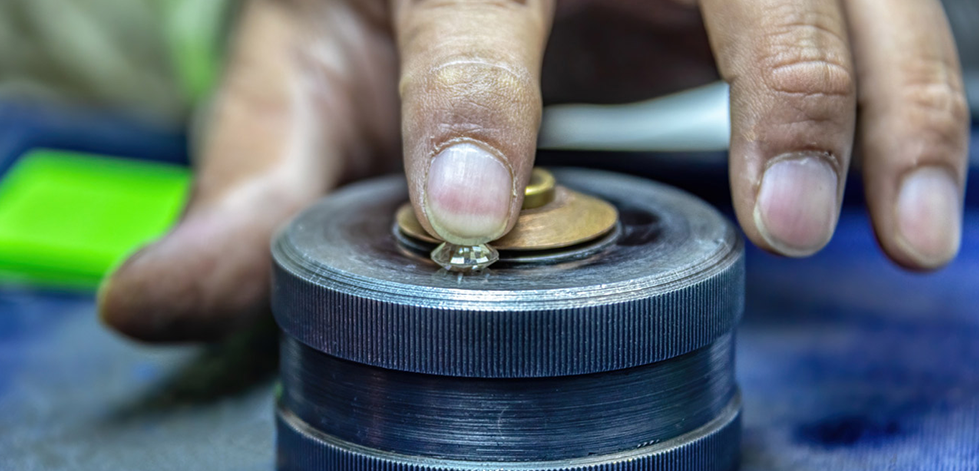Diamond Tech Companies’ Race to Trace Goods
In 2015, while celebrating the company’s 20-year anniversary, the management of Finestar Jewellery & Diamonds felt a need to do something different. Since the Surat-based diamond manufacturer was implementing new infrastructure, it decided to make traceability central to its systems and procedures.
The thinking was that the move would differentiate it from other manufacturers and provide a way for retailers to tell the origin story of the diamonds they were selling, recalls chief operating officer Nilesh Chhabria, who shifted positions to help manage the family business around that time.
Finestar felt empowered to make this move because it was buying rough directly from the mining companies rather than on the secondary market, where diamonds change hands several times before they get to the cutting wheel. When rough came into its factory, Finestar could record the origin of each stone with documentation, including the Kimberley Process (KP) certificate and the rough-purchasing invoice.
That was the easy part. It then set out to detail each stage of the cutting and polishing process, matching weight and other elements unique to each diamond and using video and images to maintain a constant record of the diamond’s transformation, Chhabria explains. The process required each department in the factory to input and extract data as production moved through the different parts of the cutting process.
The final stage, Chhabria continues, was to produce a traceability certificate — which today is a smart card accessible via QR codes — that retail jewelers could use to tell the diamond’s story.
High on the agenda
Finestar wasn’t alone in taking this initiative. Several of the larger manufacturers, predominantly in India, began incorporating traceability into their systems and building apps that enabled storytelling. Their hope was that retailers would buy into the programs they were developing at the time.
A decade later, those early adopters are well positioned to navigate the push toward industry-wide traceability.
“Our systems are easily compatible with the likes of Tracr, Sarine and the Gemological Institute of America (GIA) programs,” Chhabria states.
Traceability has never been so high on the agenda, according to Hans Schwab, CEO of consulting service OriginAll, which also provides technology solutions. “There’s no one that’s not talking about it in the diamond industry.”
That’s largely due to the Group of Seven (G7) restrictions on Russian diamonds, which require importers to account for their stones. While most G7 governments currently mandate a self-declaration from importers that their polished goods did not originate in Russia, the European Union is working on a diamond-tracing mechanism that’s scheduled to go into effect in March 2025. The US is reportedly exploring similar blockchain-enabled verification and is expected to push its deadline for the next phase of restrictions from this September to next March, in line with the EU timetable.
The broader story
Another factor driving the spike in interest is that luxury brands are seeking to incorporate traceability in their wider sustainability programs, explains Vinit Jogani, director of Diatech, which developed the Diatrace blockchain platform.
“The broader story, particularly for the brands, is not about traceability; they’re much more interested in sustainability,” agrees Frederik Degryse, CEO of Belgium-based solution iTraceiT. “Traceability is a building block, but companies need to be able to show the whole journey, which includes the social and environmental elements.”
Luxury brands are less concerned about country of origin “and more about showing their corporate social responsibility (CSR) activities, largely because of the reputational damage that could come in,” he adds.
Meanwhile, the threat of synthetic diamonds is motivating greater accountability in the natural-diamond space.
In its 2023 sustainability mission report, Swiss watch brand Breitling set a target of achieving 100% traceable gold by 2025, adding that it would source only lab-grown diamonds for all new products “to ensure product integrity and traceability.” In particular, it will use only synthetics that third-party standards body SCS Global Services has certified as Sustainability Rated Diamonds.
A shrinking timeline
Given such pronouncements in the watch industry, and with the stricter G7 measures looming, there is a new urgency to making diamonds traceable.
Perhaps with those deadlines in mind, a moderator asked diamond tech execs at a Dubai forum in May what they considered “the main challenges to achieving full traceability by 2025.” The event at the Dubai Multi Commodities Centre (DMCC) focused on “Provenance, Traceability, and Technology in the Diamond Industry,” and like the question itself, the participants’ responses offered a fair bit of provocation, highlighting the range of issues that still need ironing out.
“What does full traceability mean or look like?” retorted one executive. “Will there be one solution or many?” countered another — and if it’s many, added a third, is interoperability between systems feasible? Further issues they raised included scalability, the level of collaboration necessary between systems and companies, the challenge of getting every part of the industry to contribute, and how to bring the information to the end consumer in an easy-to-understand way.
Their answers reflected the varying ideas on how a diamond can be tracked, and from where — and showed that even the question of what constitutes traceability can be a contentious one.
Mine to market
Most agree that full traceability begins at the source: the mine. But not all systems are built to facilitate that, as their technologies focus on the diamond’s journey from the polished stage.
For Klemens Link, director of Provenance Proof, it’s a matter of transparency. “Ideally, a diamond should be traceable all the way back to the mine, but transparency can also start within the supply chain,” argues Link, whose company uses nanotechnology to mark polished diamonds. “The important part is that the stakeholder must not pretend to give more transparency than it really can.”
The degree of transparency possible differs with each traceability method. There are systems that match the diamond with a digital twin, science-based solutions that use physical markings or stone analysis, and solutions that compile user-provided declarations and digital processes to connect the stages of the diamond journey. Very few, if any, can cover the entire pipeline on their own, and most require collaboration with other service providers to fill the gaps. Generally, the biggest gap lies between the rough-mining stage and manufacturing the polished.
That has put the De Beers-funded Tracr program in the driver’s seat, given the volume of rough goods it has access to. It uploads De Beers rough — which accounted for an estimated 25% to 30% of global production volume in 2023 — directly to its platform.
Tracr’s challenge of onboarding more producers, however, is one that all traceability providers share, with varying levels of success. Very few miners have publicly announced collaborations with providers, even if they’ve disclosed that they’re considering traceability technologies.
Minimum standards
Scalability is not a technological challenge, as most platforms can handle larger volumes of diamonds. Even the question of interoperability is considered a moot one. What interoperability really means is that there’s a data layer enabling the different platforms to talk to each other, explains Tracr CEO Wesley Tucker.
“The question shouldn’t be if the systems are compatible, because that’s the beauty of technology; it has the architecture, and it’s not a difficult thing,” comments Margot Stuart, cofounder of OriginalLuxury — a collaborative venture that OriginAll helped establish. “The more pressing issue is to define the minimum viable standard of traceability.”
That encompasses mapping out the expectations for each stage of the diamond’s journey, she elaborates. “How do we ensure the transition of data from one stage to the other and verify that the diamond is what you’re saying it is? There’s a layer of complexity whereby within every phase, you need to define what these requirements are.”
In other words, says Schwab, providers must ensure a secure and efficient transfer of data as the diamond moves along the value chain, in a way that invokes trust among the stakeholders.
This might require an open application programming interface (API) — a type of contract that lets different programs communicate with each other and that would lay out the specifications all providers would need to support, explains Diatech’s Jogani.
Something to show off
Setting such standards needs to be an industry effort and requires collaboration among all tech providers, even as they compete with one another, stress Schwab and Stuart.
External regulators are circling to impose their own standards, which “would be detrimental to the diamond industry,” Stuart cautions. Collaborating as an industry would empower the trade to go to regulators, brands and consumers and say, “This is what we’re doing and how we’re doing it.”
Meanwhile, many in the midstream have expressed concern about sharing their data with third-party providers. The issue of data ownership is a sensitive point, admits David Block, CEO of diamond-equipment manufacturer Sarine Technologies. The data doesn’t belong exclusively to the traceability provider, but to each of the entities at their given points along the supply chain. The participants agree to let the technology platform use the data for traceability purposes only, he explains.
Still, the concern is there, and it is among the reasons that larger manufacturers have built their own independent diamond-tracing programs, observes Vipul Sutariya, sales and marketing director at Surat-based manufacturer Dharmanandan Diamonds and director of Innovseed, which created the Diabot traceability system.
Regardless, more manufacturers are recognizing the need to adopt tracing measures — not because they may have to meet stricter G7 requirements, but as a tool to add value. Finestar’s diamond-tracking program is one of the few things working for the company in today’s difficult market environment, particularly among mom-and-pop jewelers, Chhabria relates.
This value addition is crucial, stresses Link: It enhances the market potential for retailers, creates more trust at the point of sale, and helps store owners manage their supply-chain risks. And that extends throughout the industry pipeline.
“For anyone who wants to add value to their asset, traceability not only shows they have nothing to hide, they have something to show off,” he says.
Who pays, who gains?
Given the choice between a sustainable diamond by a well-known brand and one that comes with no sustainability assurance, 60% of consumers would select the former, according to a study De Beers published in its 2021 Diamond Insight Report. Even more telling was the report’s finding that 85% of those people would be open to paying an average premium of 15% for such a diamond.
“A retail tipping point is now taking place as both retailers and diamond producers seek to ensure product traceability” so they can provide those assurances, the authors added. Their findings sparked further debate about longstanding questions in the industry: Is there an additional margin to be gained from traceable diamonds? Who would make that profit? And who would bear its cost?
The debate has influenced the various service providers’ cost structures. Tracr recently introduced a per-stone charge for users wishing to unlock information about a diamond, as the platform seeks to be economically viable outside of De Beers. Similarly, Sarine Technologies charges whoever wants the data, and predominantly markets its Diamond Journey reports to retail jewelers. The GIA charges for its Diamond Origin Report, a product mainly used in the midstream, but it also offers its Source Verification Service for free. Other providers sell their equipment, and some have adopted a subscription model.
Generally, there is no charge for manufacturers to upload their stones to the traceability platforms, but they are bearing set-up fees as well as logistical and marketing costs, among other hidden charges. Most manufacturers are therefore adding a few percentage points to the sale prices of their diamonds, but even that may not cover the costs, according to providers that spoke with Rapaport Magazine.
The bigger opportunity lies at the retail level, although not all jewelers are using traceability to gain margins. The luxury brands, for example, view it as part of their risk-management strategy. For them, the traceability element has nothing to do with price, but feeds into their broader story and supports their brand promise.
It’s the specialty jewelers and independents that stand to gain the most from traceability. Jewelers that have identified the chance to offer something different around sustainability and built a program tapping the story of their traceable diamonds are demonstrating greater value. They can therefore claim the additional margins that De Beers’ report says consumers are willing to pay.
Image: Illustrative image of a diamond. (David Polak/Midjourney)



